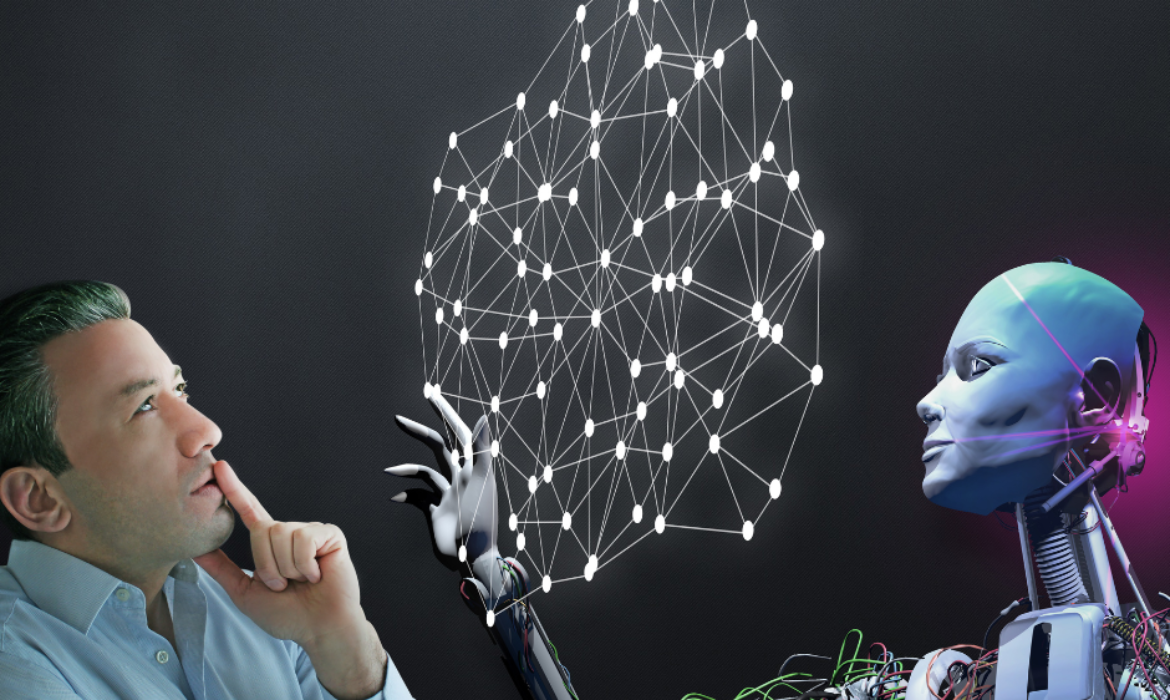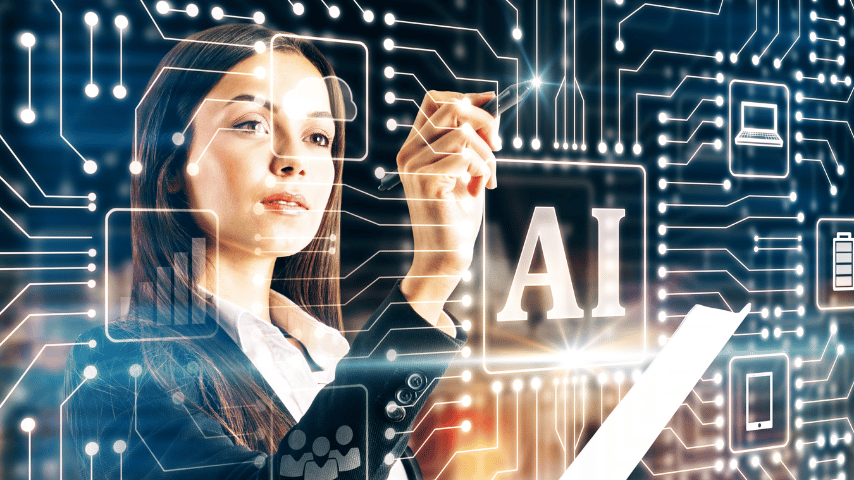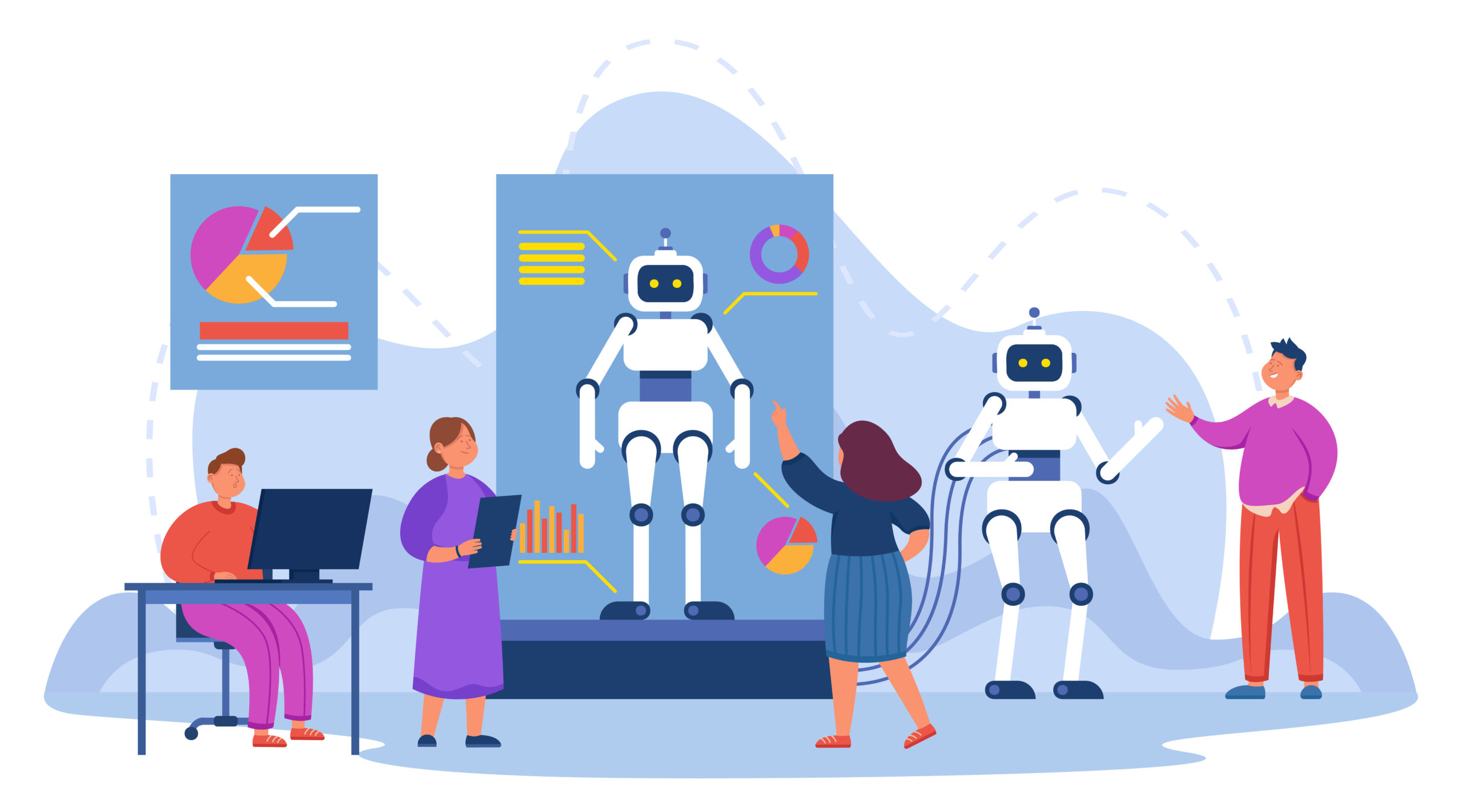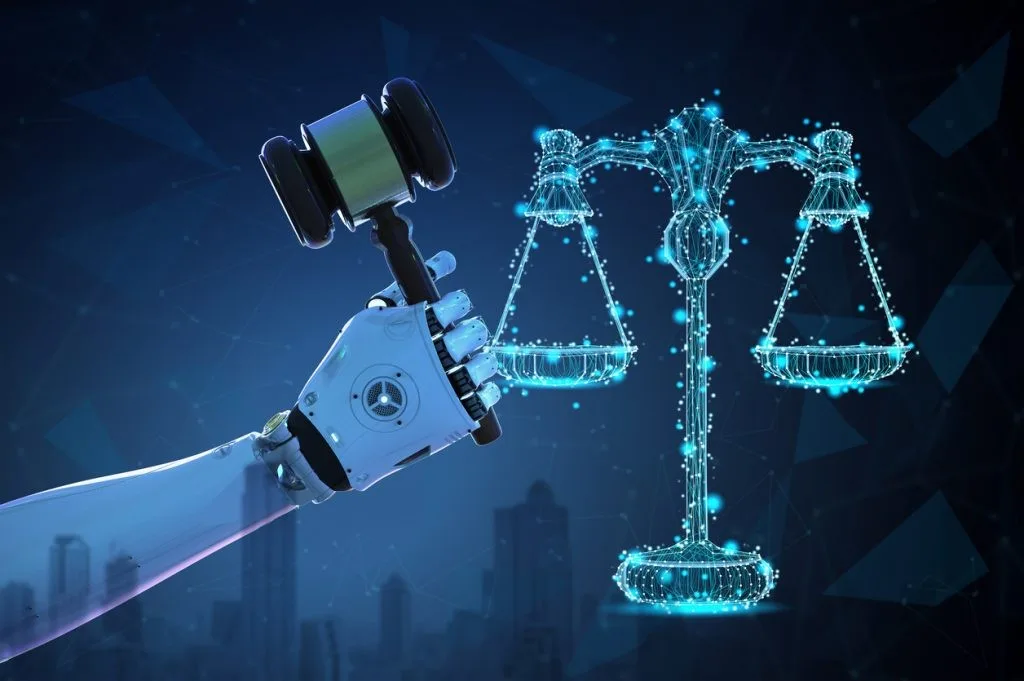
Next-Level Lead Generation: Advanced Strategies for Modern Marketers
January 3, 2024
Future-proof Your E-commerce Business: Digital Marketing Strategies for and Beyond
January 4, 2024A. Unraveling the AI Mystique
Artificial Intelligence, once a futuristic concept confined to the pages of science fiction, has emerged as a transformative force in the marketing landscape. Unraveling the AI mystique involves dissecting its complex layers to understand how it transcended its sci-fi origins. AI is not a single entity but a confluence of technologies, including machine learning, natural language processing, and computer vision, each contributing to its enigmatic prowess.
As we delve into the intricacies, it becomes apparent that AI is more than just a set of algorithms. It represents a paradigm shift, redefining how businesses connect with their audience. The mystique lies not just in the algorithms but in the possibilities they unlock. From predicting consumer behavior to generating creative content, AI has become the driving force behind marketing’s evolution.
B. The Evolution of Marketing in the Digital Age
To understand AI’s impact, we must first trace the evolution of marketing in the digital age. The journey from traditional advertising to digital marketing paved the way for AI’s integration. The advent of the internet transformed how businesses reach their audience, giving rise to data-driven strategies.
Social media further accelerated this evolution, turning marketing into a dynamic conversation rather than a one-way communication channel. The digital age not only provided new platforms but also generated vast amounts of data. This data, once an overwhelming challenge, became the fuel for AI algorithms, enabling marketers to glean insights and make informed decisions.
C. The Intersection of AI and Marketing
The intersection of AI and marketing was not a premeditated fusion but a serendipitous coming together of technological advancement and industry needs. Marketers, grappling with the complexities of data analysis and personalization, found in AI a solution to their challenges.
This intersection signifies more than just efficiency; it embodies a symbiotic relationship. AI relies on the vast datasets generated by digital interactions, while marketers leverage AI’s analytical prowess to make sense of this data. The result is a harmonious blend of human creativity and machine precision, reshaping the marketing landscape.

The Rise of AI in Marketing
A. Machine Learning: Shaping Consumer Insights
Machine learning, a subset of AI, stands at the forefront of shaping consumer insights. Its ability to analyze vast datasets at incredible speeds allows marketers to understand consumer behavior in ways previously unimaginable.
The complexity of consumer preferences, once a puzzle, is now a decipherable code. Machine learning algorithms identify patterns, trends, and correlations within data, unveiling insights that inform marketing strategies. From predicting purchase decisions to tailoring product recommendations, machine learning is the analytical powerhouse steering marketing toward unprecedented precision.
B. Chatbots and Virtual Assistants: Redefining Customer Interaction
Gone are the days of automated voice prompts and scripted customer service interactions. Chatbots and virtual assistants have ushered in a new era of personalized customer interaction. These AI-driven entities engage customers in natural language, providing assistance, recommendations, and even a touch of humor.
The key lies in their adaptability and continuous learning. Chatbots evolve with each interaction, becoming more attuned to individual preferences. This not only enhances customer satisfaction but also frees up human agents for more complex tasks, maximizing efficiency in the customer service realm.
C. Personalization Algorithms: Crafting Tailored Experiences
Personalization algorithms have elevated marketing from a generic broadcast to a bespoke experience. By analyzing user behavior, preferences, and historical data, AI tailors marketing messages to resonate with individual consumers.
The art of personalization goes beyond addressing customers by their names. It involves predicting their needs, anticipating desires, and presenting offerings that align with their unique preferences. This level of customization fosters a deeper connection between brands and consumers, creating a sense of understanding and resonance.
D. Predictive Analytics: Anticipating Market Trends
Predictive analytics, powered by AI, transcends the reactive approach of traditional marketing. Instead of responding to trends, businesses can now anticipate them. By analyzing historical data, market dynamics, and external factors, predictive analytics models forecast future trends with remarkable accuracy.
This foresight enables businesses to position themselves ahead of the curve. Whether adjusting inventory, fine-tuning marketing campaigns, or innovating products, predictive analytics empowers businesses to not just keep pace with trends but to set them.

Transformative AI Technologies
A. Natural Language Processing (NLP): Decoding Communication
Natural Language Processing (NLP) marks a breakthrough in AI’s ability to decode human communication. It goes beyond recognizing words; NLP understands context, sentiment, and even cultural nuances.
In the realm of marketing, NLP transforms content analysis and customer interactions. Sentiment analysis gauges public reactions, allowing brands to respond promptly to emerging trends or concerns. Furthermore, NLP facilitates natural conversations between consumers and virtual assistants, creating a seamless and authentic brand experience.
B. Computer Vision: A Visual Revolution in Marketing
The saying “a picture is worth a thousand words” takes on new meaning with computer vision. AI-driven visual analysis is revolutionizing how marketers approach imagery, from product recognition to content creation.
Computer vision not only identifies objects within images but also understands their context and relevance. This capability enhances the visual appeal of marketing materials, ensuring that images resonate with the target audience. From social media posts to product catalogs, computer vision is the visual storyteller of the AI era.
C. Generative Adversarial Networks (GANs): The Art of Creation
Generative Adversarial Networks (GANs) introduce a creative dimension to AI, challenging the traditional boundaries between human and machine-generated content. This adversarial dance between two neural networks results in the generation of content that is both novel and realistic.
In marketing, GANs are transforming content creation, producing visuals, videos, and even text that captivate audiences. The ability to generate unique and compelling content at scale opens new frontiers for creative campaigns, pushing the boundaries of what marketing can achieve.
D. Reinforcement Learning: Fine-Tuning Marketing Strategies
Reinforcement learning, inspired by how humans learn from trial and error, brings adaptability and optimization to marketing strategies. This iterative process of learning from outcomes refines marketing approaches over time.
In the dynamic landscape of digital marketing, where consumer preferences evolve rapidly, reinforcement learning offers a strategic advantage. From adjusting ad placements to refining targeting parameters, this AI approach ensures marketing strategies remain not just relevant but consistently optimized.

AI-Driven Content Marketing
A. Content Creation: From Words to Wonders
AI’s foray into content creation is more than automated text generation; it’s about transforming words into wonders. Natural Language Generation (NLG) algorithms analyze data to produce coherent, contextually relevant content.
This isn’t about replacing human creativity but enhancing it. AI-generated content can be the foundation upon which human writers build, saving time and providing valuable insights. From news articles to product descriptions, AI is a collaborative partner in the content creation process.
B. SEO Optimization: Unleashing the Power of Algorithms
SEO has evolved from keyword stuffing to a nuanced dance with algorithms. AI, with its ability to analyze vast datasets and predict search engine updates, is the guiding force behind effective SEO optimization.
From on-page elements to backlink strategies, AI refines every aspect of SEO. It’s not just about ranking higher; it’s about understanding user intent and delivering content that satisfies both search engines and users. In the AI-driven era, SEO is a strategic dance with algorithms that demands agility and precision.
C. Social Media Management: Navigating the Digital Conversations
The cacophony of digital conversations on social media platforms requires a nuanced approach. AI-powered social media management tools sift through this vast sea of interactions, identifying trends, sentiments, and opportunities.
Beyond scheduling posts, AI analyzes engagement patterns, suggesting optimal times for content distribution. It helps marketers join conversations authentically, fostering meaningful connections with audiences. In the digital age, social media management isn’t just about posting; it’s about navigating the dynamic ebb and flow of online conversations.
D. Video Marketing: Storytelling in the AI Era
Videos are the crown jewels of digital content, and AI enhances their storytelling potential. From video editing to personalized recommendations, AI is the behind-the-scenes maestro creating compelling visual narratives.
AI-driven video marketing goes beyond predicting what viewers want; it tailors content to individual preferences. It’s not just about reaching a broad audience; it’s about engaging each viewer on a personal level. In the AI era, video marketing isn’t a monologue; it’s a dynamic, personalized conversation.

Ethical Implications of AI in Marketing
A. Privacy Concerns: Balancing Personalization and Security
As AI delves deeper into personalization, the line between customization and invasion blurs. Privacy concerns arise as businesses collect and analyze vast amounts of personal data to tailor marketing strategies.
The challenge lies in finding the delicate balance between delivering personalized experiences and safeguarding consumer privacy. Striking this equilibrium requires transparent data policies, robust security measures, and a commitment to ethical data usage.
B. Bias in Algorithms: Unraveling the Code of Ethics
Algorithms, while powerful, are not immune to biases. Whether in data inputs or algorithmic decision-making, biases can inadvertently perpetuate stereotypes and inequalities.
Understanding and mitigating bias in AI algorithms is a critical ethical consideration for marketers. This involves constant scrutiny, diverse dataset representation, and a commitment to fairness in algorithmic outputs. Unraveling the code of ethics ensures that AI-driven marketing remains inclusive and unbiased.
C. Transparency in AI: Building Trust with Consumers
Trust is the cornerstone of successful marketing. In the age of AI, transparency becomes paramount. Consumers have a right to know how their data is used, what algorithms dictate content recommendations, and how AI shapes their online experiences.
Building trust requires open communication about AI processes. Transparent practices, clear privacy policies, and user-friendly explanations of AI-driven features instill confidence and foster lasting relationships between brands and consumers.
D. Regulatory Landscape: Navigating the Legal Framework
As AI becomes an integral part of marketing, the regulatory landscape evolves to address its implications. Governments and regulatory bodies worldwide are crafting frameworks to govern AI usage, especially in sensitive areas like marketing.
Navigating this legal landscape demands a proactive approach from businesses. Compliance with data protection laws, adherence to ethical standards, and staying abreast of evolving regulations ensure that AI-driven marketing remains not just innovative but also within legal boundaries.

Challenges and Opportunities
A. Talent Acquisition: The Need for AI-Savvy Marketers
The integration of AI into marketing brings forth a demand for a new breed of marketers – those who are not just creative minds but also AI-savvy strategists.
Challenges emerge in recruiting and retaining such talent. AI expertise is a valuable commodity, and businesses must compete to attract professionals who can harness the power of AI in crafting effective marketing campaigns. Nurturing this talent pool becomes a strategic imperative for organizations aiming to stay ahead in the AI-driven marketing landscape.
B. Integration Hurdles: Merging AI into Traditional Strategies
While AI offers a wealth of capabilities, integrating it into existing marketing strategies presents its own set of challenges. Resistance to change, legacy systems, and a learning curve for traditional marketers can hinder the seamless adoption of AI.
Successful integration involves not just deploying AI tools but also fostering a cultural shift within marketing teams. It’s about recognizing the value AI brings and aligning it with broader strategic objectives. Overcoming these integration hurdles requires a blend of technological adoption and organizational adaptability.
C. Cost Considerations: Balancing Innovation and Budget
AI is a potent innovation, but innovation comes at a cost. Businesses must navigate the delicate balance between embracing AI-driven strategies and managing budget constraints.
The initial investment in AI tools and talent can be substantial. However, the long-term benefits, including enhanced efficiency, improved targeting, and a competitive edge, outweigh the upfront costs. Balancing innovation and budget involves strategic planning, phased implementation, and a focus on the long-term value AI brings to marketing endeavors.
D. Competitive Edge: Harnessing AI for Market Dominance
In the competitive landscape of modern business, gaining a competitive edge is not a luxury but a necessity. AI provides the tools for businesses to not just keep pace with competitors but to surpass them.
The challenge lies in harnessing AI strategically to differentiate from competitors. It’s not just about adopting AI; it’s about leveraging it to innovate, adapt quickly to market changes, and offer unparalleled value to customers. The businesses that master this art of harnessing AI for market dominance secure their positions as industry leaders.

Future Projections
A. The Continuous Evolution: What Lies Ahead
The journey of AI in marketing is a perpetual evolution. As technology advances, so do the possibilities. The future promises even more sophisticated algorithms, novel applications, and a deeper integration of AI into every facet of marketing.
Looking ahead requires businesses to remain agile and adaptive. Embracing a mindset of continuous learning and exploration ensures that organizations stay at the forefront of AI-driven innovations, ready to navigate the ever-evolving landscape of marketing.
B. AI and Human Collaboration: Finding the Optimal Balance
While AI augments marketing capabilities, the human touch remains irreplaceable. The future envisions a harmonious collaboration between AI and human creativity, where machines handle data-driven tasks, allowing humans to focus on strategic thinking, innovation, and emotional connections with customers.
Finding the optimal balance involves understanding the unique strengths of both AI and human marketers. It’s about creating synergies that amplify each other’s capabilities, leading to a marketing ecosystem where humans and machines coexist and thrive.
C. Technological Synergy: Integrating AI with Emerging Tech
AI doesn’t operate in isolation; it synergizes with other emerging technologies. The future landscape of marketing involves a seamless integration of AI with technologies like augmented reality, virtual reality, and the Internet of Things.
This convergence creates immersive, personalized experiences for consumers. Businesses that embrace this technological synergy gain a competitive advantage, offering innovative and cutting-edge interactions that set them apart in the market.
D. Marketing 5.0: A Glimpse into the Future Paradigm
As AI becomes an integral part of marketing, we move towards Marketing 5.0 – a paradigm where hyper-personalization, technological integration, and ethical considerations converge. This future vision sees marketing not just as a promotional tool but as a holistic experience that understands, engages, and resonates with consumers on a profound level.
Navigating this future paradigm demands a proactive approach. It’s about anticipating trends, embracing innovation, and staying true to ethical principles. Marketing 5.0 isn’t just a destination; it’s a dynamic journey where adaptability and innovation become the guiding principles. Let’s delve deeper into the components that shape the future of marketing.
C. Technological Synergy: Integrating AI with Emerging Tech
The fusion of AI with emerging technologies is the heartbeat of Marketing 5.0. Imagine a world where augmented reality (AR) and virtual reality (VR) seamlessly integrate with AI-driven marketing strategies. Customers can virtually experience products, receive personalized recommendations in real-time, and engage with brands in immersive digital environments.
In this technologically synergized future, AI becomes the orchestrator of a symphony that includes AR-enhanced shopping experiences, AI-powered virtual assistants in VR spaces, and IoT-connected devices providing a continuous stream of data for refined personalization. This convergence doesn’t just enhance marketing; it transforms it into an interactive, multi-sensory journey.
D. Marketing 5.0: A Glimpse into the Future Paradigm
Marketing 5.0 isn’t a mere numerical progression; it’s a qualitative shift. At its core, it’s about human-centric marketing that goes beyond transactions to build genuine connections. In this future paradigm, AI is not just a tool; it’s a partner in understanding human emotions, desires, and aspirations.
Imagine AI algorithms not just predicting what products customers might like but understanding the emotional resonance of a brand message. Marketing 5.0 involves brands becoming empathetic storytellers, weaving narratives that resonate with individual beliefs and values. It’s about transcending the transactional nature of marketing to create memorable experiences that leave a lasting imprint on the consumer psyche.
The roadmap to Marketing 5.0 requires businesses to embrace a holistic approach. It involves investing not just in AI technologies but also in understanding the intricacies of human behavior. It’s a future where data-driven insights and emotional intelligence converge to create a marketing landscape that’s not just efficient but profoundly human.
Conclusion
In this expansive exploration of AI’s impact on the marketing landscape, we’ve traversed the historical evolution, dissected transformative technologies, and contemplated the ethical dimensions. The journey into the future reveals a landscape where AI and human creativity coalesce, propelling marketing into a new era of possibilities.
As we navigate this evolving terrain, it’s crucial for businesses to be both pioneers and navigators. Embracing AI isn’t just about keeping up with trends; it’s about leading the charge, innovating with purpose, and maintaining an unwavering commitment to ethical practices.
The future isn’t a fixed destination; it’s an unfolding narrative shaped by the decisions and strategies we implement today. The AI-driven marketing landscape beckons, and those who navigate it with a blend of technological prowess, human insight, and ethical integrity will undoubtedly lead the way.


